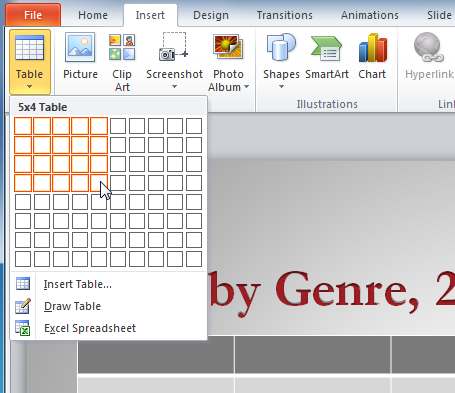

We adjust the calendar on the slide and insert a text box to write the name of the month.

To do this, we select the whole table > Table Design > Borders > No Fill. Let's remove the shading from the calendar structure. Here is a small example of what you can do: Once the structure of the calendar is done, you can customize it to your liking: you can add text boxes, images, and other elements to give it your personal touch.It is important that before removing the borders you have selected the whole table, otherwise, only the borders in the cell where you have the cursor will disappear. In the Table Design tab, select Borders > No border. We can remove the borders if we choose to do so.In the example, we have placed them in the middle of the cell and the text aligned to the left. We place the calendar days in the position we want.To do this, click Layout > Distribute rows / Distribute columns. After adjusting it, we need to distribute the rows and columns to make it uniform in size. And we can also adjust the calendar to the size we need.We can choose the typography that best fits the style of the calendar we want. The editing possibilities are endless.Merge the cells, type the name of the month and select center align. Click Layout > Insert Above (to add a new row). Also, you do not need to do this when you are inserting the table, but you can do it at this point of the design creation. PROTIP: You can add in the table the name of the month for which you have made the calendar. We fill in the table with the names of the days of the week and their respective numbers.In Table Design, we can customize it and give it the color formatting we want.Inside the Table window, set it up in order to get a table of 7 horizontal squares by 6 vertical squares. Now we are going to design the calendar by inserting a table.To do this, under the Home tab, click on Layout and select Blank. Open a new PowerPoint presentation to design your own calendar.


 0 kommentar(er)
0 kommentar(er)
